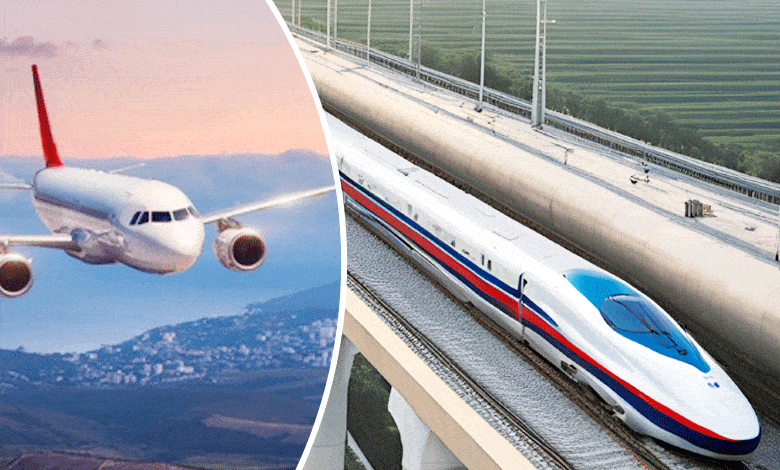High-Speed Revolution: China’s New Train to Beat Airplane Speeds
This cutting-edge project demonstrates China’s ambition to lead the world in transportation innovation, potentially reshaping the future of high-speed travel and setting a new standard for speed and efficiency.

Beijing: Airplanes have long been considered the fastest mode of travel, but China is now working on a groundbreaking project that could redefine high-speed transportation. The country has commenced the development of a next-generation train capable of reaching speeds of 621 miles per hour (1,000 kilometers per hour), outpacing even jumbo jets.
Table of Contents
Also Read: Former South Korean Defense Minister Attempts Suicide While in Custody
Powered by Magnetic Levitation (Maglev) Technology
This futuristic train will utilize advanced magnetic levitation (Maglev) technology, a system already employed in some of the world’s fastest trains. Unlike conventional trains, Maglev trains float above the tracks, eliminating friction and enabling extraordinary speeds. While the current global record-holder, the Shanghai Maglev, travels at 285 mph, this new Chinese train aims to more than double that speed.
A Leap Towards Green, Efficient Travel
Chinese railway officials have emphasized their commitment to creating faster, more energy-efficient, and eco-friendly transportation options. The new train design is expected to consume less energy while delivering a smoother, quieter ride compared to existing rail systems.
Surpassing Airplanes
For perspective, most long-haul commercial airplanes, such as jumbo jets, cruise at speeds of 547 to 575 mph. The proposed Chinese train would comfortably exceed these speeds, presenting a competitive alternative for both domestic and international travel.
China’s Current High-Speed Rail Network
China already boasts the world’s largest high-speed rail network, with existing trains operating at speeds of up to 217 mph. This ambitious project represents a significant leap forward in rail technology, potentially reducing travel times between major cities to a fraction of what they are today.
Implications for Global Travel
If successful, this train could revolutionize how people travel, especially for medium-haul routes where train travel could become faster and more convenient than flying. Additionally, the project aligns with global efforts to reduce carbon emissions by providing a sustainable alternative to air travel.
Challenges Ahead
While the concept is promising, experts note several hurdles, including the immense cost of infrastructure, safety concerns at ultra-high speeds, and technological challenges in maintaining stability and comfort. Despite this, China’s track record with high-speed rail suggests a strong likelihood of success.
This cutting-edge project demonstrates China’s ambition to lead the world in transportation innovation, potentially reshaping the future of high-speed travel and setting a new standard for speed and efficiency.
